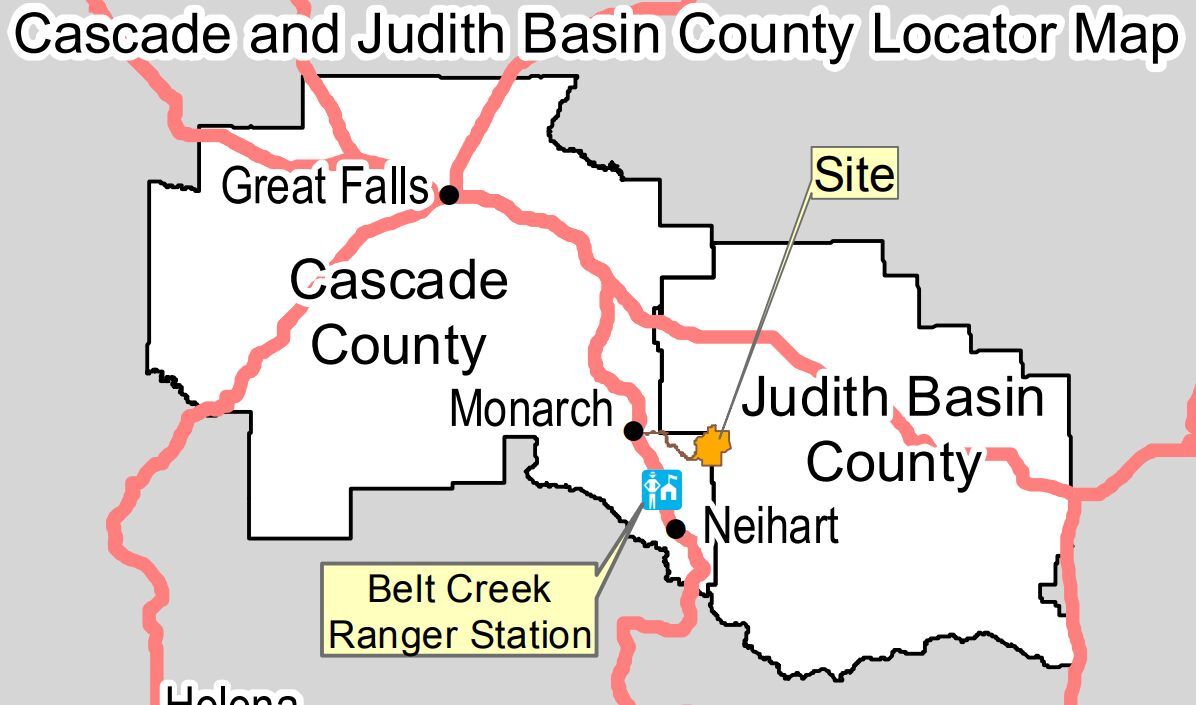The Dry Fork Belt Creek region just east of Monarch along the Highway 89 corridor has been getting more visitors recently - which has prompted authorities to issue some safety reminders.
The campground, located in the Helena-Lewis & Clark National Forest, is home to pristine creeks, rocky cliff-faces, and excellent hiking.
Abandoned mine shafts dot the landscape, a relic of Montana’s mining boom in the late 19th century. These shafts provide a somewhat creepy side-attraction but also serve as a dangerous reminder to travelers.

It goes without saying that visitors should not go near or inside these mines, as they are unstable and hazardous - but their hidden element is perhaps more unsettling.
Years of flooding have pushed old metal sediments from the mines into the waterways and soil along the riverbanks. These metals include lead, which is poisonous to humans.
The Environmental Protection Agency website states:
The 6,000-acre Barker Hughesville Mining District site is located south of Great Falls and about 12 miles east of Monarch in Judith Basin and Cascade Counties. Rich silver and lead ores were discovered in the Barker Hughesville area in 1879. Mining activity occurred there until 1893 and again at the beginning of the 20th century through the 1940s.
The site contains about 46 known abandoned mines strewn with waste rock dumps, tailings and water-seeping mine openings. The abandoned mines have contaminated soil, sediment, groundwater and surface water with arsenic and metals such as copper, zinc, cadmium, and lead.
The U.S. Forest Service is reminding people to take care.
Forest Ranger Chiara Cipriano said, “The best way to avoid consuming lead is to make sure to bring your own water, (and) you’re not relying on pumping it from the creek. Basic hygiene practices like washing your hands before eating is going to be very important so that any kind of soil or dust on your hands, you're not consuming that.”
She added, “Visitors who like to forage along shorelines, again, there's a history of mining in the area, those plants can take up some of the heavy metals, and it's not suitable to consume those.”

Visitors to the area should take these dangers seriously, though the looks can be deceiving. Cipriano noted, “The first time I went out there, it looked like a pristine creek, no problem at all. I would assume I could drink right out of the creek, and so I was surprised to learn about it."
A news release from the Helena-Lewis & Clark National Forest provides the following information:
Exposure to lead and other heavy metals can occur through ingestion and inhalation of contaminated soils. Lead exposure can affect nearly every system in the body and often occurs with no obvious symptoms. Health effects from lead and other heavy metals primarily occur through ingestion and inhalation of contaminated soils therefore good hygiene practices should be used to limit exposure. Lead exposure can harm the nervous system, especially in children and pregnant women.
Here are some tips for minimizing lead/heavy metal exposure:
- Wash hands and face before eating and limit hand to mouth contact.
- Bring water for drinking, cooking, and washing. Do not use water from the stream—even if it is filtered!
- Keep yourself and belongings clean. Remove dirt from clothes, toys, pets, and equipment before leaving the area since soil tracked home from recreational areas can become a source of exposure.
- Wear bandanas or other dust-coverings over the mouth and nose when riding off-road trails
- Stay on trails and in designated areas
- Eat on a table or on a blanket in grassy areas to avoid accidently consuming soil and dust.
- Do not harvest edible plants from floodplain areas
"Lead is one of the many heavy metals that is present in this recreational corridor,” said Belt Creek-White Sulphur Springs District Ranger Helen Smith. “We now have brochures available at our local district office in Neihart to help folks recreate safely in the area, and we will be installing educational kiosks in the area next spring.”
For more information, click here, or call the U.S. Forest Service Belt Creek Ranger District at 406-236-5100.
TRENDING ARTICLES
- Identified: fugitive shot in Great Falls
- CMR High School: better security
- Mountain Lion gets too close
- Plane crashes into Flathead River
- Crumbl Cookies open in Great Falls
- Honoring firefighter Michael Kuntz
- WATCH:Buchanan-Ronning-Rosendale



